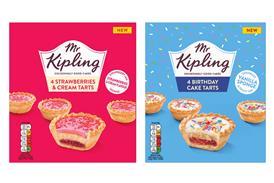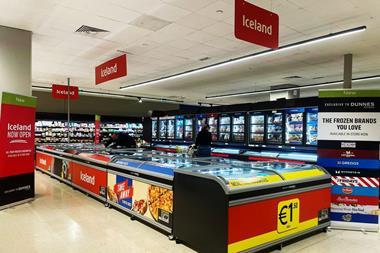More companies are seeing the potential in canned fruit. Sales are up as it starts to ditch its old-fashioned image and attract younger consumers with a focus on the five-a-day message
Although market penetration of canned fruit may be high, the product tends to languish in the back of a cupboard for some time.
It is also traditionally bought by the older customer, but brands are looking to make canned fruit more of an everyday occasion and are trying to attract the younger consumer by focusing on the five-a-day message.
And it seems to be working. According to TNS, canned fruit sales have gone up 2.4% [52 w/e June 19, 2005].
More companies are seeing the potential in canned fruit, and Princes recently entered the market to wrest share away from brands such as Del Monte. It launched its branded fruit range in January and is predicting that it will become the number two brand by the end of the year.
“Our market share has grown from practically nothing to 5% in just six months, so we are extremely pleased,” says Neil Brownbill, marketing director at Princes. “We have new packaging, new varieties and have added the five-a-day logo on to our cans. That has been well received by the trade.”
Princes may have managed to improve distribution at the
expense of market leaders Del Monte, but the culture has now changed at Del Monte. With new management in place, the pace has been upped, says Del Monte senior product manager of prepared fruit, Lucy Giffen.
“The next six months will see the most changes at the company for a very long time. We have had a tough trading year because of competitor activities. We have lost a lot of distribution but, despite that, we have increased sales by 500,000 units and total business is doing very well,” says Giffen.
There is now a move to modernise the image of the category. To overcome the old-fashioned image of canned fruit and get more young consumers to buy, retailers must change the name of the aisle, says Giffen. It is the only category described by the packaging and, according to Giffen, that is holding growth back. Del Monte would prefer it to be named ‘prepared fruit’.
Del Monte is also in the throes of a massive education programme aimed at mums and younger consumers.
Giffen says: “We have to make people realise that fruit doesn’t have to be fresh to count towards your five-a-day.
“A lot of people do not understand the canning process and assume lots of extra stuff is added because that’s what’s expected from packaged foods. But our fruit is packed within 24 hours of ripening, with no additives or preservatives.”
Giffen also says that the merchandising is wrong. To cause less customer confusion, fruits should be separated into syrup and fruit juice, rather than by fruit type alone, she says.
She claims that own label has driven value out of the market, but says that brands can get value back with their premium offer.
Although market penetration of canned fruit may be high, the product tends to languish in the back of a cupboard for some time.
It is also traditionally bought by the older customer, but brands are looking to make canned fruit more of an everyday occasion and are trying to attract the younger consumer by focusing on the five-a-day message.
And it seems to be working. According to TNS, canned fruit sales have gone up 2.4% [52 w/e June 19, 2005].
More companies are seeing the potential in canned fruit, and Princes recently entered the market to wrest share away from brands such as Del Monte. It launched its branded fruit range in January and is predicting that it will become the number two brand by the end of the year.
“Our market share has grown from practically nothing to 5% in just six months, so we are extremely pleased,” says Neil Brownbill, marketing director at Princes. “We have new packaging, new varieties and have added the five-a-day logo on to our cans. That has been well received by the trade.”
Princes may have managed to improve distribution at the
expense of market leaders Del Monte, but the culture has now changed at Del Monte. With new management in place, the pace has been upped, says Del Monte senior product manager of prepared fruit, Lucy Giffen.
“The next six months will see the most changes at the company for a very long time. We have had a tough trading year because of competitor activities. We have lost a lot of distribution but, despite that, we have increased sales by 500,000 units and total business is doing very well,” says Giffen.
There is now a move to modernise the image of the category. To overcome the old-fashioned image of canned fruit and get more young consumers to buy, retailers must change the name of the aisle, says Giffen. It is the only category described by the packaging and, according to Giffen, that is holding growth back. Del Monte would prefer it to be named ‘prepared fruit’.
Del Monte is also in the throes of a massive education programme aimed at mums and younger consumers.
Giffen says: “We have to make people realise that fruit doesn’t have to be fresh to count towards your five-a-day.
“A lot of people do not understand the canning process and assume lots of extra stuff is added because that’s what’s expected from packaged foods. But our fruit is packed within 24 hours of ripening, with no additives or preservatives.”
Giffen also says that the merchandising is wrong. To cause less customer confusion, fruits should be separated into syrup and fruit juice, rather than by fruit type alone, she says.
She claims that own label has driven value out of the market, but says that brands can get value back with their premium offer.

















No comments yet